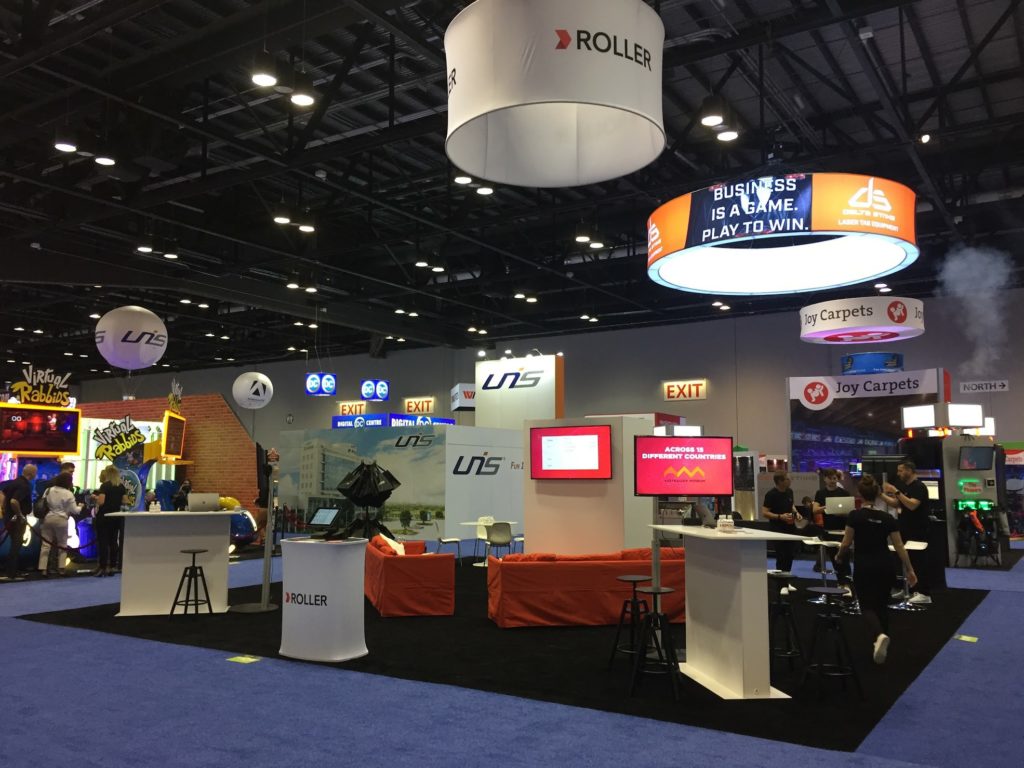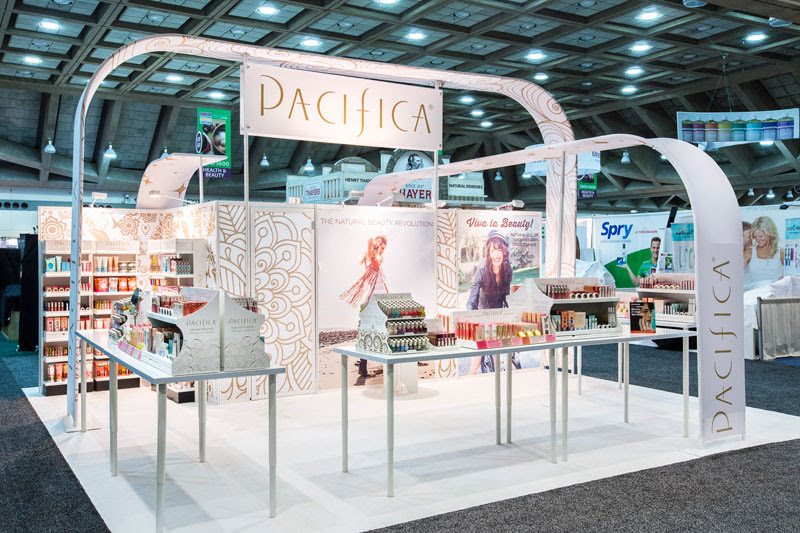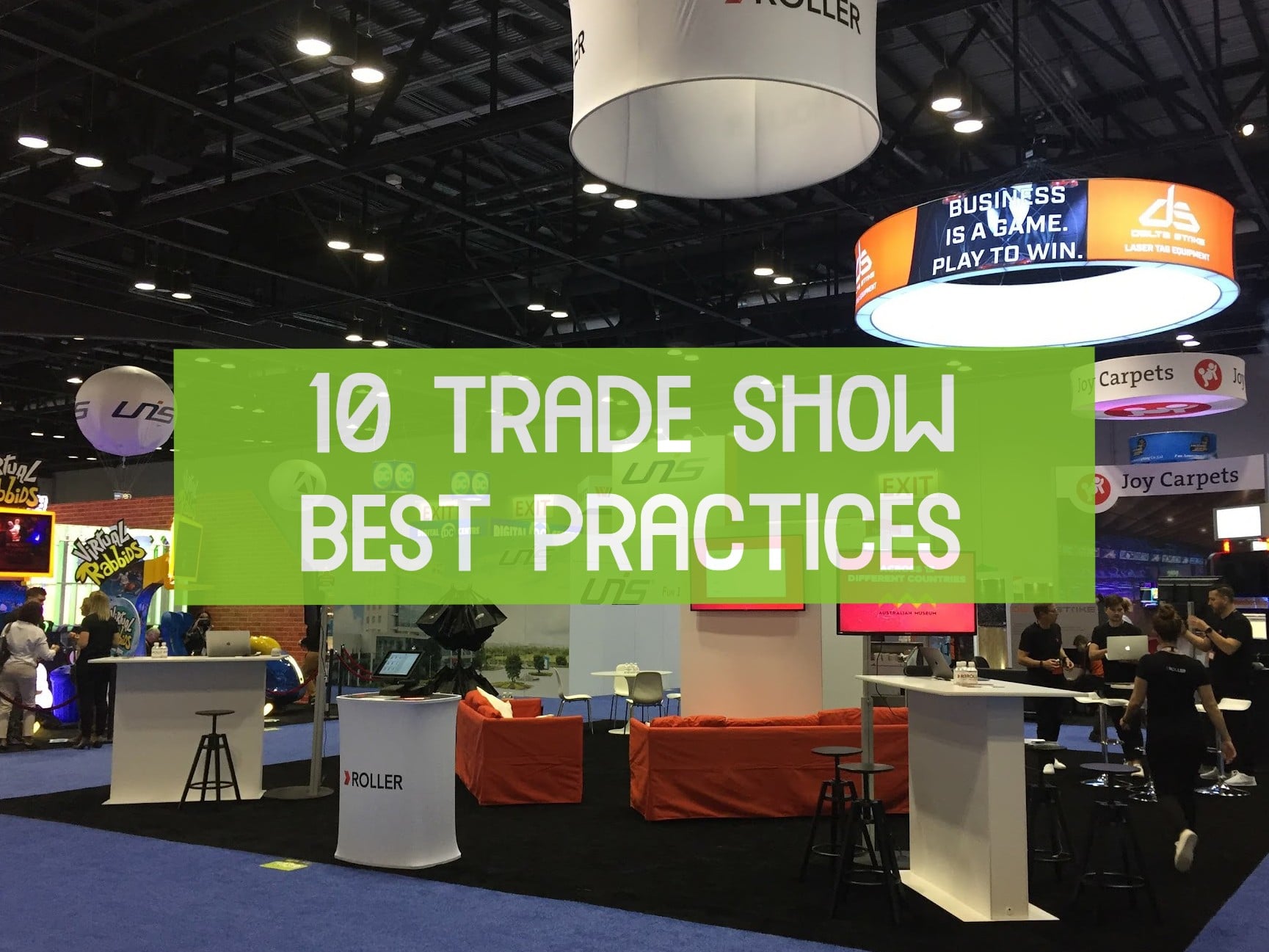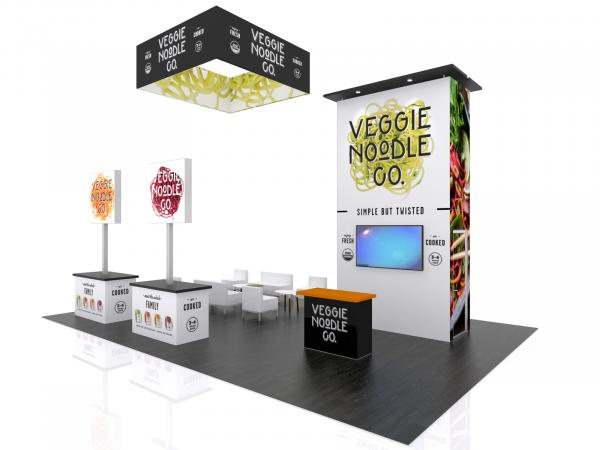💡 Here are the 10 trade show best practices for success.
Trade shows are an excellent way to network with potential customers, learn about new products, and are just a lot of fun. While trade shows can be great, they also have their challenges.
There are more than just a few steps that need to be taken before you get on your plane and head off for one. It is essential to know what is in store for you so that you can prepare yourself accordingly. Here are 10 trade show best practices that will help ensure success at your next trade show.
Check our trade show booth design examples to get inspired.
Trade show best practices you should know about
- Figure out what trade shows are right for you.
There is so much to consider when choosing an event, but the show you choose must be industry-specific and relevant to deliver information about products or services with interest from those attending; also, make sure there will benefit attendees by showcasing what they need!
- Plan Ahead
Trade show booths are an investment in time and money that yields a strong return on both fronts. It can be easy to get caught up in the hustle of last-minute planning. Still, you need eight weeks, if not more than one month before your next trade show date, so there is enough lead-time for all details. Name tags or shirts are designed especially with buyers’ needs.
Custom banners showcase what makes them unique from other company’s products/services available now. Use these marketing tools wisely by promoting through flyers handed out during breaks while browsing exhibits hallways between sessions running simultaneous displays devoted entirely to specific industries.
- Set a Goal
Trade show goals should be clear and specific. You might want to meet 20 new contacts, develop 10 business leads or generate five sales for this event. Take paper/pencil with you so that when the time comes, you will not forget what your plan is supposed to accomplish before it’s all said and done.
- Promote it
One of the most effective ways to market your company is through trade shows. But if you do not have a comprehensive plan in place, then people will not be interested. They might walk away from your booth without stopping for more than just a second glance at all of its products or services on offer there–meaning no sales.
The input talks about how important it is for businesses to prepare ahead before going into unknown territory by developing an optimized marketing strategy. It includes the following steps, such as identifying target demographics so that you can better reach out with personalized communication strategies tailored towards clients.
- Build booth traffic
People attending or browsing through exhibits at trade shows need to know who is behind that product. You need an exhibitor page that includes contact information such as name and phone number and links back from social media profiles like Facebook and LinkedIn pages where additional photos might exist.
This will help create more interest not only when potential buyers stop by. But also, while scrolling through other websites, these sites often include listings of participating businesses, including their logo. This adds value. Add extra content to promote yourself- added content should offer visitors something.
You can use digital marketing to build traffic by letting your clients know what you offer ahead of time. It includes:
- Create social media posts in advance for sharing while at the event.
- Use visuals to help tell your story – make sure you have photos of your product, logos, and other branding materials on hand.
- Share content that is relevant to your industry. This will be more interesting for potential customers who are attending the same trade show as you are.
- Get creative! For example, if you’re marketing an organic beauty brand, then share images of people wearing makeup made from ingredients found in nature or images of products being used by models who have flawless skin.
- Please make sure all of your digital channels are up-to-date so that when someone searches for your company, they will find what they are looking for right away.

- Establish your brand
If you have not established your brand yet, a trade show is a great place to do that. Trade shows provide an opportunity for people in the industry and new users alike who are eager about what they see on social media or hear from friends with experience using certain products/services before–to meet face-to-face. It is easy enough not to be intimidated when talking directly at someone else without having them behind some laptop screen.
To establish a trade show brand, you can:
- Create a logo
- Design your booth to match your company’s branding and style
- Select the right colors for your booth that will attract attendees
- Send out promotional materials in advance of the show, such as postcards or fliers
- Make sure you have enough signage and flyers on hand to promote yourself at the event
- Get ready with all necessary information about your company – including contact information, logos, social media links, etc., so you can provide this info when people inquire about it at the trade show
- Create a Budget
Budgeting for your booth is an essential part of the preparation. You should have a plan, and it’s best not to spend too much, or you might believe that all of these costs are yours alone. This would mean no money left over at the end.
Taking on so many tasks in one short period can seem daunting, but breaking down each step as you go along will make things more effortless than ever before (or maybe even disappear like magic!).
Take the following steps when using a budget
- Plan and build a budget before you commit to anything
- Figure out how much money you’ll need and where it will go – do this by making a list of all the things that need to be done
- Add in some room for unexpected expenses, like if there’s an emergency at home or something goes wrong with the booth setup
- Create a timeline for when everything needs to happen so that you know precisely what is expected of you as well as what day payments are due on
- Make sure everyone is aware of deadlines and timelines – this includes vendors, coworkers, bosses, etc., so they can help keep track too.
- Stick to your budget. It may not seem like it at first, but over time, sticking to your budget will save you both time and money because it helps prevent unnecessary spending, which is always better than having extra cash lying around unused.

- Set Up a Timeline
There are a few things to keep in mind when setting up your timeline. Know how much time you will have for setup and tear down. Planning accordingly is more straightforward, especially if there is limited space or not enough hands on deck during an event’s installation/removal period.
- Research Trade Shows
Trade shows are a great way to meet with potential customers and new suppliers. They are also enjoyable.
To make sure your trade show experience goes smoothly, you need an exciting list of exhibitors and attendees who share interests similar enough. It will spark conversation between everyone involved during breaks from networking sessions.
- Determine Trade Show Exhibit Design
There are many different options when you decide what kind of trade show exhibit design to go with. For example:
Themes can range from educational or informative ones that focus on product information and use data graphs and visual aids like pictures. They may also feature interactive games where players compete against each other to win prizes (e.g., an Xbox One).
A more traditional approach would include displays containing merchandise for purchase by visitors at booth sales counters installed permanently inside the hallways leading into the exhibition space.
These shows usually maintain high traffic because people stop here before going off onto larger rooms elsewhere within your venue. Make it count. Another popular choice involves hanging large banners outside hotels near significant intersections.

Everything Tradeshows has you covered. Don’t forget to check our trade show booth design and trade show booth rental offer.
Additional trade show best practices
Choose a Trade Show Booth Space
The Right Trade-show booth can make or break your business. Researching the suitable space, creating a floor plan for it, and knowing how much room you will need are critical steps in planning a compelling trade show.
When selecting your booth space, you should consider the following factors:
- What is your budget for the booth space rental and trade show attendance?
- How many people will be staffing your booth?
- How much space do you need to showcase your products or services?
- Where are you located – if it is in a different time zone, choose a trade show that starts at an earlier time
- What size company are you – large enough to have multiple booths or just one small table?
- Do you want to rent furniture for the booth or bring your own?
Create trade show promotional materials
To make the most impact with your trade show promotional materials, we recommend printing on an eye-catching and durable material.
Make a list of the companies that will be attending and create a plan to visit them.
It would be best if you planned to visit the companies that will be at this event. Write down their names and any other information about them, like how many employees they have or anything else you might need before starting, so it will not take long when looking through the list afterward. Gather up some business cards from each.
Schedule meetings with potential clients before you arrive so they can save time by meeting with you on-site
Prepare questions in advance so you won’t forget anything important during your conversations with people at the Trade show. Do you have any questions for the people attending your trade show? That’s a great idea.
Prepare ahead of time so that nothing is forgotten. I think it would be helpful if, before your meeting, you could go over what each person might want to know or ask about in more detail so their queries won’t surprise you later on during the conversation.
Have plenty of promotional materials available at your booth
Make sure you have plenty of promotional materials available at your booth is key to success. A well-paced presentation can make visitors feel like they’ve walked into an extension of their own office space while providing them with all the information needed for making quick decisions on products or services.
Get the right team
Get the right team to showcase your business at trade shows. You will want your business showcased in front of people who can give feedback about what works and does not work.
Your team should fully understand your business and products and be willing to put energy into marketing efforts through other means, such as social media campaigns running ads across different platforms.
Tips to consider for your team:
- Create a checklist for your team to follow.
- Discuss what you want them to accomplish at the trade show and how they should behave while there.
- Make sure everyone has their name badge and lanyard, plus any extra business cards or brochures that will be needed.
- Give each person on your team a specific role, such as greeters or information booth workers.
- Once people start arriving, have an assigned time frame when each person is expected back, so no one gets overwhelmed by all of the commotions.
- Talk with your team about what they need to feel comfortable – this could include snacks, water bottles, noise-canceling headphones, etc
Final Thoughts
The best way to prepare for a trade show is by planning. Figure out what your goals are and how you want the experience to go. If you cannot come up with any ideas, remember that it’s there to help grow your business. Don’t be afraid of getting in touch with customers or potential clients – after all, they are at the event too.
Trade shows are a fantastic opportunity not only because they allow companies like yours to get their name out there. But also because networking events will give you access to other people who may bring something new into your company’s repertoire. But make sure you plan, set some goals for yourself beforehand.
Finally, remember to spread the word about what you are exhibiting at trade shows because they are all about networking. I hope these 10 trade show best practices will help prepare you before attending any trade show event.
Learn more about trade show best practices:
- Learn more about essential trade show tips for exhibitors to maximize your booth’s potential.
- Discover effective strategies for lead generation at trade shows in our informative blog post.
- Explore proven tactics for enhancing visitor engagement through clothing display at trade shows.
- Explore our guide on effectively showcasing products at trade shows if you’re uncertain about the best approach.
- Implementing engaging activities is essential for learning how to attract people to your booth.
- Explore strategies on how to get exhibitors for a trade show.
- Read more how to have a successful trade show booth.
- Explore creative design tips to make your trade show booth shine and leave a lasting impression! Check out our latest blog post for insights.
- To enhance your marketing skills, learn how to plan a trade show for maximum impact and audience engagement.
- Effective research is vital in understanding how to prepare for a trade show.
- Learn how to sell at trade shows to maximize your business’s potential and outreach.
- Read our detailed guide how to set up a booth at a trade show.
- Explore the trade show shipping tips for a hassle-free exhibition journey in our informative guide.
- Many businesses boost their revenue by selling at trade shows. Read our blog post.
- Here are some trade show attendee tips to help you make the most of your experience.
- Don’t forget to review the trade show checklist before the event to ensure everything is in order.
- Here are some trade show exhibitor tips to help you succeed at your next event.
- Explore our range of promotional products for trade show giveaways and discover exciting ideas to make your booth stand out!
- Here are some trade show giveaway ideas to attract visitors to your booth.
- What makes a good trade show booth? Find out in our latest blog post.
- Looking for trade show banner ideas? Check out our latest design inspirations!
- What to wear to a trade show? Read our guide.
- Are you interested in what type of promotion takes place at trade shows? Explore this topic.
- Why attend trade shows? Discover the best arguments.
- Why do exhibitors attend trade shows? Read more on our blog.
- Discover the answer to this common question: Why exhibit at a trade show?
- Learn more about why are trade shows important.

It’s in the name! Everything Tradeshows is your one-stop shop for all things trade shows, including booth purchases, booth rentals, and complete brand management services. Ready to get started? Have questions? Get in touch by calling us at (954) 791-8882 or by filling out the form below. We can’t wait to hear from you!








